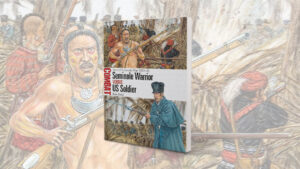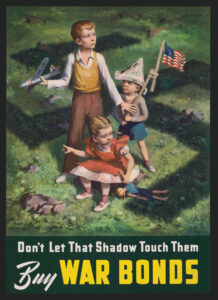Civil War: The Untold Story
Produced and directed by Chris Wheeler RLJ Entertainment
Chris Wheeler’s new documentary series Civil War: The Untold Story boldly declares its uniqueness in its title, and roots this claim in a focus on the Western Theater: the extensive territory between the Appalachians and the Mississippi River (but no farther west than that). The five-part series begins with an examination of political battles over the expansion of slavery into this region; later episodes range widely through the events in every theater, with extended attention to the fights at Forts Henry and Donelson, Shiloh, Vicksburg, Chickamauga, Chattanooga, Kennesaw Mountain and Atlanta. The film argues that these battles were as vital to the war’s outcome as Antietam and Gettysburg. For most scholars and students of the conflict, these arguments are not all that new, and the film does not do much to change our conception of the chronology of the fighting or explain its outcomes in an innovative way.
Civil War: The Untold Story does sustain a discussion of slavery and emancipation throughout, which is refreshing. For example, this will likely be the first time that most viewers learn about the contraband camp at Corinth, Miss., whose success was short-lived when both soldiers and freed people were ordered to move on. Through the insightful commentaries of Amy Murrell Taylor, Deirdre Cooper Owens and Peter Carmichael, the film conveys the complicated history of this camp, and injects a bit of “dark history” into what is otherwise another triumphant, Reconciliationist narrative of the war.
The film also pays some attention to women’s experiences, mostly through individual stories. For example, it tracks the relationship between Alabama schoolteacher Joshua Calloway and his wife Dulcinea, from his muster into the Confederate Army to his death on the battlefield at Missionary Ridge, Tenn., just a few months later. But other than intermittent set pieces (and despite the fact that the narrator is a woman, actress Elizabeth McGovern), women are missing from this narrative. This absence is particularly striking in the film’s depictions of hard war campaigns, which increased in number and ferocity after 1863; soldiers raid only houses that are empty of their female inhabitants. And the guerrilla warfare that brought many women in the border region into the conflict receives no attention at all.
Wheeler’s claim to innovation is fulfilled in one respect; he uses reenactors to film live-action sequences on battlefields and Southern plantations. Here there are graphic scenes of wounding and death. Wheeler was allowed to film some of these scenes at national battlefield parks, but because the action is filmed mostly from the ground, with a tight focus on the firing of cannons and a handful of men falling in thick forests, the viewer does not often get a sense of individual landscapes of war. And if you watch the chapters back-to-back (on DVD rather than on PBS television), you realize that some of the footage is repeated; this tends to undermine the effectiveness of the film’s claims to geographic authenticity.
The effort to tell new stories yet situate them in larger political and military narratives is laudable. Civil War: The Untold Story is one of several recent documentaries that attempt novel forms of narrative (American Experience’s Death and the Civil War) and technique (Jake Boritt’s The Gettysburg Story). But none have been able to move beyond Ken Burns’ iconic documentary form, introduced nearly 25 years ago. We still get slow pans across photographs and other archival documents, interspersed with battle maps and historical analysis from scholars and public historians. And we still hear the same stories, set in slightly different places and given voice by a slightly more diverse group of people. I’m not sure when a documentary filmmaker will tell a truly untold story of the Civil War, in a truly original and breathtaking way. But we’ll know it when we see it.
Originally published in the October 2014 issue of Civil War Times. To subscribe, click here.




